Marvellous Maths
This week, we’ve shifted our mathematical focus to the first of the four operations – addition and subtraction. On Monday, we sorted some calculations into ones we could do mentally, ones that we’d need to make jottings for and ones that we’d need to use a formal method for (column addition or subtraction).

After we’d sorted the calculations, we had a go at each one using a range of mental methods. We even had the chance to create a story for some of them.
Yesterday, we reminded ourselves about column addition. We used concrete manipulatives (like Base 10 and counters) to check we understood the process and then played a game in pairs that meant we got loads of practice in. Some of us made posters that explained the method. Children will use these if they get stuck during our lesson today.



It’s really easy to practise addition and subtraction at home. Simply create two (or three) random numbers and add or subtract them (using both formal and mental methods were necessary). You can check your answer using a calculator. For an added challenge, create a story for the calculation.
School Savings Club dates for paying in
The School Savings Club paying in sessions for this year are at 3.15-3.45pm on the following dates (the penultimate Thursday of each half term).
- 12 October
- 07 December
- 01 February
- 22 March
- 17 May
- 12 July
If you’re unable to attend in person, please hand in any money to be deposited to the office in a sealed envelope addressed to Mrs Tiffany.
Information will shortly be sent home about the accounts and if your child would like to open account, please enquire at the office. There is an extra incentive for pupils in Year 3 as Leeds City Council will add £10 to your child’s account.
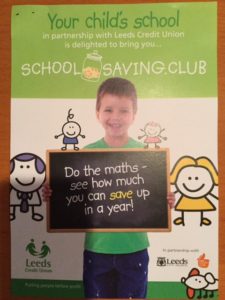
Practice that feels like play!
Practice that feels like play! Does this sound beneficial for your child? Have a look at IXL. It’s an online tool where you can access different activities to help your child practise basic skills.
It’s split into year groups, specifically looking at English and Maths, then each subject is broken down into sections. You can get a flavour of the activities by hovering over the title and can have a go at some of them – it looks great fun and very child friendly. The questions are all interactive and there are detailed explanations for new concepts.
There is a small monthly fee if you wish to sign up. Take a look – it might be something you want to explore.
Explorers
This week, we’ve become explorers as part of our new big topic. Explorers is a geography driven topic that will see us embark on a journey round the world (not literally!) as we start to see that the world is bigger than we think.
Yesterday, we started by scouring through some atlases to see where in the world we’d like to explore further (LO: Where would you like to explore?). Then, we saw some images of amazing places from all seven continents (ask your child to name the seven continents) and imagined how cool it would be to explore them. In our books, we chose our favourite place and said ‘I know…I think…I wonder’.

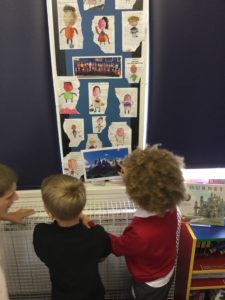
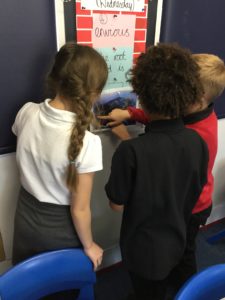
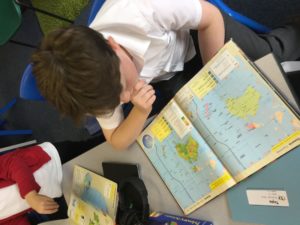
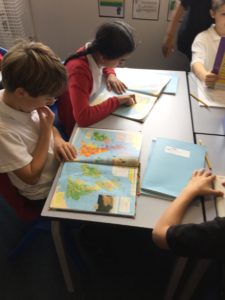
Today, we became virtual explorers by using Google Earth to explore some places we fancied visiting. We discussed the physical and human features of place and compared some of them to a place we are all familiar with: Moortown. It turns out, the Great Barrier Reef is nothing like Moortown Corner!

After being ‘wowed’ by the wonders of modern technology, we used a good old fashioned OS map to explore some places a little closer to home (LO: What can I learn from a map?). We discussed what we knew about each place just from looking at the map and then we used a key to decipher what some of the symbols meant (ask your child if they can remember any).
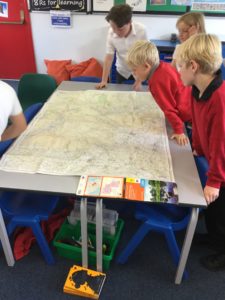
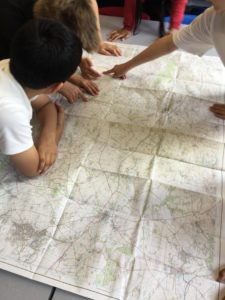
When we started to read our class novel, we noticed a map on the inside cover. Isabella, the main protagonist, is about to embark on a journey that will see her explore the mythical, dangerous land in which she lives. We presumed the Isle of Joya was a completely fictional place until we noticed something on this page…
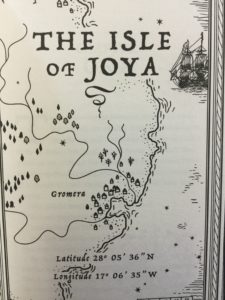
After typing the latitude and longitude into Google we discovered that they are for an actual place: La Gomera. It turns out, the novel is loosely based on the author’s holidays to the Canary Islands as a child – obviously, she’s added in some mystery and magic! To link with our map learning we created our own key and added symbols to the map of Joya. We used some of the setting descriptions within the book to help and predicted what might lie in the forbidden woods!
So, in our topic this week we’ve explored using OS maps, explored using atlases, become virtual explorers and explored a fictional land.
Spectacular science
Yesterday, we enjoyed a mind-blowing science lesson in which we practised our observation skills (LO: To be able to use observations to verify predictions).
We started off by moulding some ‘Soapy Foam’ (other brands available) into a sphere.


We knew we were going to leave the soap (untouched) all day. We each made a prediction about what we thought would happen:
- ‘I think it will shrink because the water in the soap will evaporate.’
- ‘I think it will expand because of the pressure from the air.’
- ‘I think it will turn into a puddle because it will melt.’
Then, as a group, we ordered our predictions from least likely to most likely.


We observed the soap throughout the day. This is called an ‘observation over time’. Ask your child what happened and encourage them to explain why they think this occurred.
In the next part of the lesson, we filled a small glass with water. We filled the glass to its absolute full capacity – ask your child what we noticed about the top of the glass. On the table, we had a range of items (cotton wool, counters, paper clip, Base 10 rod, Multilink cube) and predicted what would happen if we put them in the glass. Obviously, the water would be displaced and overflow, right? Well, we all decided that the cotton wool had the best chance of fitting in the glass without any water spilling over the slides so we investigated. We put the cotton wool in the water and observed what happened…

You’ll never believe it but the cotton wool went into the glass without a single drop of water being spilled! Ask your child if they can explain to you why this strange phenomena occurred (hint: think about particles and the three states of matter).
Everyone’s mind was blown. Especially this person…

Homework review (Creative)
I was really impressed with this week’s homework. Well done, everyone! To celebrate the monumental (ask your child what this word means – we came across it in our class novel this week) efforts from Y5 we took part in our first homework review of the year. We had the chance to see everyone’s responses and left comments in books to say well done.
Here are a few of our favourites…
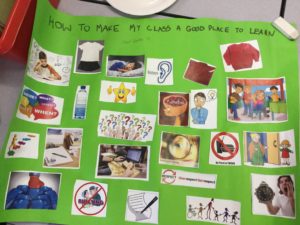

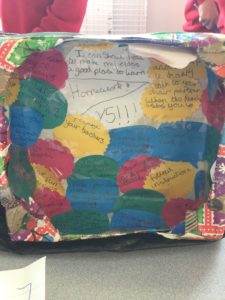
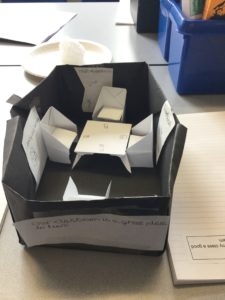


And, here is our absolute favourite piece this week. Well done, Ben. Your model classroom was incredible. I love the attention to detail!



PE – basketball
Yesterday, in PE, we practised our basketball skills. We focussed on our dribbling skills and played games that allowed us to improve our skills whilst working as a team. More importantly, we made sure we worked up a sweat and had fun!
Please remember that your child should have their PE kit in school every Tuesday and Wednesday (preferably every day). However, from next week onwards (for 4 weeks), PE will be on Monday and Wednesday. This is to accommodate a visitor.
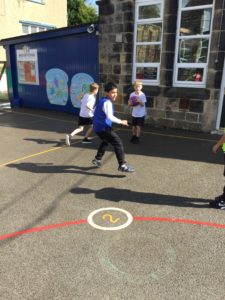
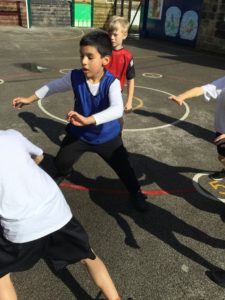
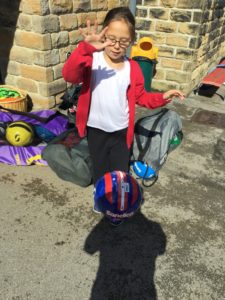
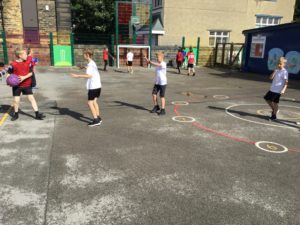
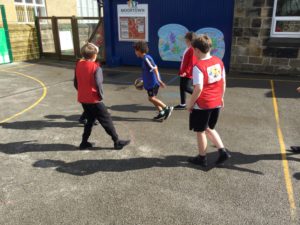
Ourselves in the style of Oliver Jeffers
Wow! I’ve been blown away by our fantastic art today. Over the last two weeks, we’ve been building on our existing art skills in order to prepare ourselves for this final piece (Learning Objective: To be able make images in the style of another artist).
Inspired by ‘The Incredible Book Eating Boy‘, we drew an illustrated version of ourselves in the style of Oliver Jeffers. Oliver Jeffers, who has illustrated lots of other books, has quite a unique style and we tried to replicate this in our pieces. For example, when studying a range of his work, we noticed that many of his characters have large, round heads. In the images below you can see that many children were able to replicate this in their drawings. Similarly, we noticed that his characters tend to have very spindly arms and legs; again, you can see this in the examples below.






Can you spot which one is Mr Catherall?
If reading this post with your child, help them practise their writing skills by asking them to point out all the fronted adverbials and relative clauses.
Experimenting with different media – art
On Monday, we had the chance to experiment with using watercolour paint and watercolour pencils (Learning: To be able to use different media). We had a go with each and decided which one we’ll use to add detail to our illustrations – some people decided they’d use both! Our illustrations will be of ourselves but in the style of Oliver Jeffers, the author and illustrator of ‘The Incredible Book Eating Boy’.
Here’s a few images of us showing off our best concentration faces:
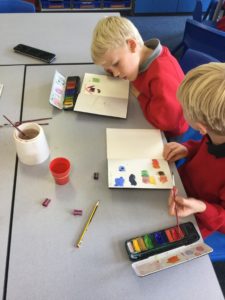


And, a few good examples from our sketch books:



Key Stage 2 tuck shop
Our fruit tuck shop returns next Tuesday, 19 September. The tuck shop is available for Years 3 – 6 at playtime every Tuesday and we regularly sell over 100 portions of fruit every week.
The cost per portion of 20p remains the same this year and children can either pay weekly by bringing money on the day or take advantage of our pre-payment offer of one free week per term.
Please return the prepayment reply slip by the end of the week if you would like your child to have that option.
Here are some quotes about our tuck shop from the recent pupil health questionnaires.
- ‘It is excellent as you get a range of different fruits.’
- ‘I think tuck shop has yummy fruits.’
- ‘You are selling healthy stuff which is good for us.’
- ‘You don’t feel hungry during lesson time.’
- ‘I really like it as it is a nice healthy snack.’
- ‘It’s very good and keeps our school healthy.’
- ‘You get to have fruit at a low price and it helps you to have one of your 5 a day.’
